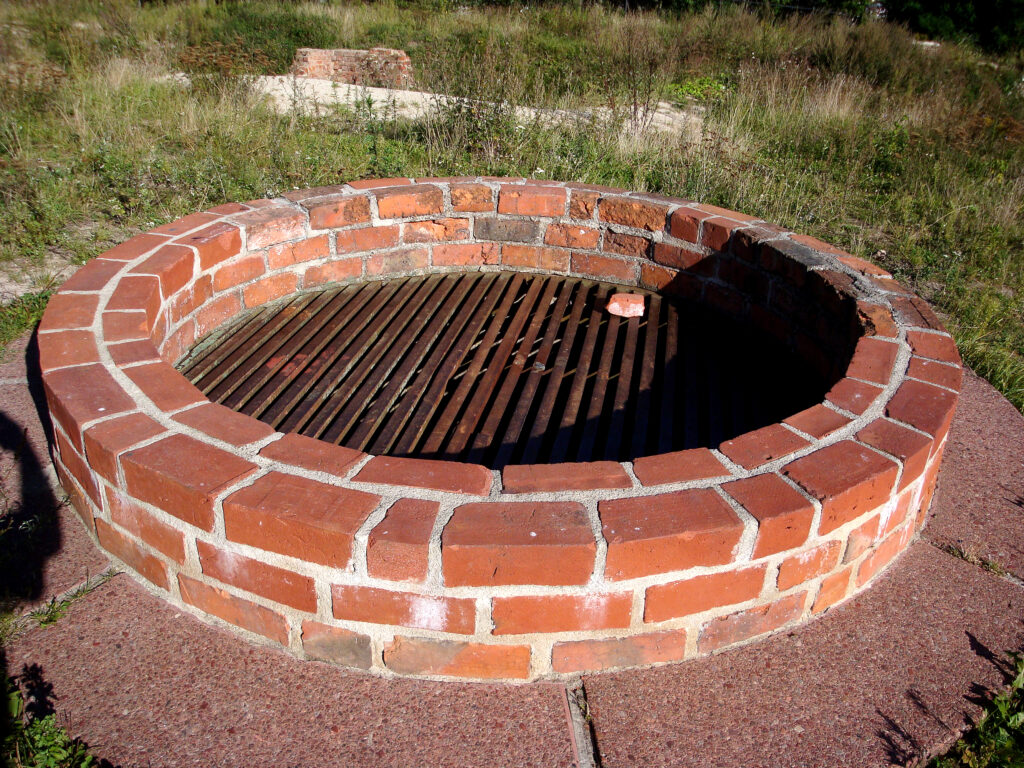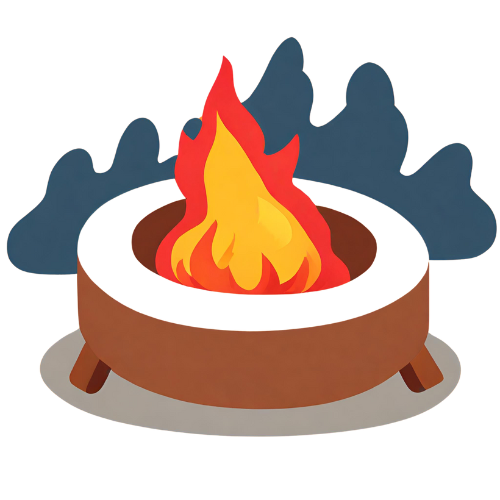A circle fire pit calculator helps you figure out the exact dimensions for building a round fire pit. It takes into account the diameter you want, how thick the materials are, and the height you’re aiming for. This tool crunches those numbers to give you the radius, circumference, and even the amount of material you’ll need. No need for guesswork or trial and error; this calculator gives you precise info to make your fire pit project a smooth process.

Circle Fire Pit Calculator
Results:
Radius: feet
Circumference: feet
Materials needed: square feet
Diameter
The distance across the fire pit, from one side to the other, is called the diameter. It’s super important. The bigger it is, the more friends can sit around the fire.
You don’t want it so big that it fills up your whole yard. If it’s too small, only a few people can enjoy the fire. So, the diameter is a big deal when picking the right fire pit. It helps you balance having a good time with your buddies and still having space in your yard.
Depth
Depth is the next big thing to consider for your fire pit. This decides how well your fire will burn. Too shallow, and the fire goes out quickly. Too deep, and you’ll have trouble even getting it started. You need the depth to be just right. It helps the fire burn steadily without making it hard to light up. So it’s crucial to find that perfect depth when choosing your fire pit. It’ll make your fire enjoyable, easy to start, and keep it burning for a good time.
The depth is important because it also affects how much wood or other fuel you need. A deeper pit might need more fuel, which means more work for you.
Height
Height is another thing to keep your eyes on. The height of the fire pit affects a couple of things. One, it decides how easy it is to toss in more logs when the fire is going. A super tall fire pit might make it tough to keep the fire going. Two, the height plays into how well the heat spreads around to everyone sitting near the fire. A taller fire pit is usually better at sending heat to people who are a bit further away.
But if it’s too tall, those sitting close might not feel the heat as much. So, it’s about finding the right balance.
Material Choices
There are a bunch of options like metal, stone, or concrete. The material is more than just looks; it also has to do with how long your fire pit is going to last. Some materials are better for certain types of weather.
For example, metal might not be the best choice if you live somewhere with a lot of rain, as it can rust. Your choice of material should match not just your style but also your local weather conditions.
Example 1: 4 Feet Diameter, 8 Inches Thickness, 16 Inches Height
- Input Diameter: 4 feet
- Input Thickness: 8 inches
- Input Height: 16 inches
- Output Radius: 2 feet (half of 4 feet)
- Material Needed: 35 square feet (for instance)
Example 2: 5 Feet Diameter, 6 Inches Thickness, 18 Inches Height
- Input Diameter: 5 feet
- Input Thickness: 6 inches
- Input Height: 18 inches
- Output Radius: 2.5 feet (half of 5 feet)
- Material Needed: 40 square feet (for instance)
Example 3: 3 Feet Diameter, 7 Inches Thickness, 12 Inches Height
- Input Diameter: 3 feet
- Input Thickness: 7 inches
- Input Height: 12 inches
- Output Radius: 1.5 feet (half of 3 feet)
- Material Needed: 25 square feet (for instance)
Example 4: 6 Feet Diameter, 9 Inches Thickness, 20 Inches Height
- Input Diameter: 6 feet
- Input Thickness: 9 inches
- Input Height: 20 inches
- Output Radius: 3 feet (half of 6 feet)
- Material Needed: 50 square feet (for instance)
Example 5: 7 Feet Diameter, 5 Inches Thickness, 14 Inches Height
- Input Diameter: 7 feet
- Input Thickness: 5 inches
- Input Height: 14 inches
- Output Radius: 3.5 feet (half of 7 feet)
- Material Needed: 55 square feet (for instance)
